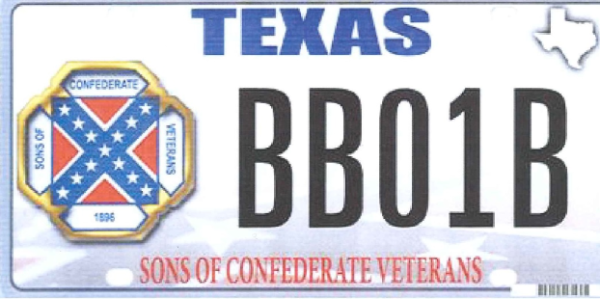Yesterday I discussed specialty plate programs in lower courts and the parties’ arguments in Walker v. Texas Division, Sons of Confederate Veterans. Today I begin to analyze the questions in the case.
But first, a disclaimer.
Disclaimer
The following is my understanding of First Amendment law, gleaned from years of reading numerous free speech opinions, summaries, and analyses. I’m generally confident in this explanation, but I may well have made mistakes, or simply missed nuance present in the cases but not in the summaries I’ve read. Please point out mistakes in the comments.
Of course, I really have no business trying to explain First Amendment jurisprudence, if I want it explained correctly. First Amendment law is incredibly complex. My haphazard reading will miss things.
But I’m barging ahead anyway, for a few reasons. First, I want to talk about this. Second, it’s fun to talk about it! Third, you don’t learn unless you’re willing to look like a fool from time to time. Fourth, the law is not this recondite, bizarre arcana that only lawyers and judges can understand. It may require some work to correctly understand laws, terms of art, rules of statutory construction, and relevant past decisions in the common law. But any intelligent person can do it if they make the effort.
And fifth, nobody with any sense will unconditionally rely on this as authoritative, not when there are far better places to look for the finest in free Internet legal advice.
Government speech
The “recently minted” government speech doctrine occupies an uneasy place in the realm of speech. For when government speech occurs, non-governmental speech open to First Amendment challenge is reduced. There must be some government speech: otherwise we’d absurdly conclude that the government’s World War II war-bond propaganda must be accompanied by anti-bond propaganda. Government programs often have viewpoints suppressible only in the voting booth. But this mechanism is sluggish and imperfectly responsive, and government speech’s discretion can be abused. So it’s best to be careful anointing government speech.
Certainly some license plates — the state’s default designs and designs ordered by the legislature — are government speech, even if they’re also individual speech under Wooley v. Maynard. In each case the government wholly chooses what it wishes to say, and that message is government speech. The individual’s choice to assist in conveying it, under Wooley, isn’t government speech.
Circularity
But Texas’s government-speech argument, applied beyond plates it designs itself, is laughable. The linchpin of Texas’s argument is that because they control the program, that makes it government speech they can control. This argument is completely circular! By starting from their control over the program’s speech, they’ve assumed their conclusion.
This doesn’t mean Texas is wrong. But their circular central government-speech argument can prove nothing. This logical flaw is blindingly obvious. Texas’s lawyers can’t have missed this. If they made this their lead argument, they’re scrambling.
Compelling Texas to speak?
Texas’s better argument is that vehicle licenses and plates are its program, implicating its right to speak or not speak under Wooley. But the First Amendment restrains government power, not individual power. And many courts (although so far not the Supreme Court) have held that government can be compelled to “speak” in accepting advertising in government-controlled places (public transit systems, for a common example). The problem is Texas voluntarily created a specialty plate program open to all for speech. No “compulsion” derives from a voluntary act.
Texas didn’t fully control the specialty plate program, but rather opened it to anyone with money. (As Chief Justice Roberts noted in oral argument: “They’re only doing this to get the money.”) It’s possible there’s government speech in Texas SCV‘s plate, perhaps the occasionally-proposed “hybrid” speech. But once Texas opens the program to all, it loses full control over what’s said.
How then do we consider specialty plate programs? What controls may Texas exercise? Now we must decide how to classify the specialty-plate program with respect to First Amendment-protected speech. What sort of forum for speech is Texas’s specialty-plate program?
Tomorrow, First Amendment forum doctrine.




